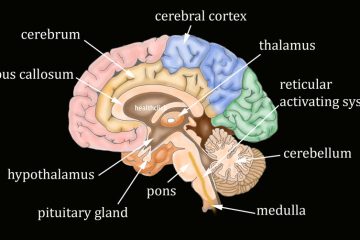Enhance Communication within the Multidisciplinary Team
As a vital member of the Cancer Rehabilitation Care Team, it’s crucial to educate both patients and other healthcare professionals, including medical oncologists, radiation oncologists, and nurse practitioners. As a therapist, promoting your expertise and reaching out to referral sources to inform them about your cancer rehabilitation services is key. By Mastering Cancer Rehab Terminology and communication strategies, you can ensure that multidisciplinary team members have confidence in your ability to effectively manage the rehabilitation process.
“Since its introduction in clinical oncology, multidisciplinary management and specifically MTBs have met with increasing enthusiasm as ways to improve the quality of patient care.”(3)
https://pmc.ncbi.nlm.nih.gov/articles/PMC7533227/
Mastering Cancer Rehab Terminology – What is Carcinogenesis?
We need to understand the process of carcinogenesis, which is the genetic, cellular transformation of a normal cell into a cancer cell. All cancers are manifestations of cells gone wrong regarding their relationships with other cells. Cancer cells are our cells that have had genetic and cellular transformations. Cancer cells are rule breakers. They don’t abide by the standard rules of contact inhibition, cellular division, or the relationships between whether or not these cells should die or whether or not these cells should replicate. They don’t follow the rules of apoptosis, which is programmed cell death when a cell no longer functions optimally. Cancer cells don’t abide by the standard rules of cellular division.
Uncontrolled Cell Division
You can think of cancer as an uncontrolled cellular division. So, a cancer cell eventually enters the cell cycle and divides. There are no rules. For Example:
- There are no controls on it to stop replicating. Cancer cells can metastasize to other locations in the body if they move into the blood or lymphatic systems.
- Loss of standard growth control leads to indefinite replication; cells are considered immortal, and cancer cells are insensitive to antigrowth signals.
- They have sustained angiogenesis, which is the ability of the cancer cells from their blood supply.
- They can invade nearby tissues and have everything they need.
- These cells have access to oxygen and a waste removal system, creating an ideal environment to replicate repeatedly.
Mastering Cancer Rehab Terminology
When I first started working with cancer patients, I attended numerous cancer committee meetings as well as cancer tumor board meetings. At these meetings, the frequently exchanged terminology was often confusing to me. Therefore, I believe reviewing and Mastering Cancer Rehab Terminology in detail is essential. This foundational knowledge clarifies the discussions and ensures a better understanding of the critical aspects of cancer care.
When we talk about the grade of cancer that refers to differentiation, differentiation is the extent to which the tumor cell looks like the cells it came from. For example, here are a few common phrases-
- Benign tumors are well-differentiated tumors that do not invade neighboring tissue or spread to other body parts.
- Malignant tumors are poorly differentiated, have characteristics that don’t look like the cells they came from, and are cancerous. They are formed from abnormal cells and can travel.
- Anaplastic cells are undifferentiated cells and are also considered the hallmark of malignancy.
- Hyperplasia is excessive cell growth and division in an organ or tissue caused by increased cell reproduction. It is often the initial stage of cancer.
- Dysplasia is a deranged cell of variable size and appearance.
- These cells are known as precancerous cells. For example, a woman who undergoes repeated mammograms might be told that the results show anaplastic or dysplastic cells. This puts her at risk of developing cancer, and the doctor would want to stop that from happening.
- In some cases, doctors prescribe drugs like Tamoxifen, which is commonly used to treat certain types of cancer. These same medications are also given to patients to help prevent cancer from developing in the body.
- Cancer in situ means that cancer remains in the tissue of origin.
- Invasive tumors invade neighboring tissues and shed their cells into the blood or lymph of nearby tissues.
- Metastasis occurs when those cells enter the blood, enter the lymphatic system, and set up shop elsewhere.
Develop a Comprehensive Cancer Rehab Approach for Successful Outcomes
The online course Cancer Rehab and Survivorship provides a comprehensive approach to developing individualized rehab programs for cancer patients. This course provides a comprehensive multidisciplinary team approach to cancer rehab and critical elements for a successful transition back to independence. It will also assist you in your journey to Mastering Cancer Rehab Terminology.

More Resources within the Online Subscription for Mastering Cancer Rehab Terminology and Developing a Comprehensive Cancer Rehab Program
Go to https://www.healthclick.com/physical-therapy-continuing-education.php and utilize the resources provided in the Cancer Rehab Series of comprehensive courses within the All-Access Healthclick Subscription. Some of the courses in this series are:
The Fundamentals of Lymphedema
Maximizing Post-Surgical Outcomes in Cancer Rehabilitation
References
- Chapman, Emma J., et al. “Practice review: Evidence-based and effective management of fatigue in patients with advanced cancer.” Palliative medicine 36.1 (2022): 7-14.
- Kudre D, Chen Z, Richard A, Cabaset S, Dehler A, Schmid M, Rohrmann S. Multidisciplinary Outpatient Cancer Rehabilitation Can Improve Cancer Patients’ Physical and Psychosocial Status-a Systematic Review. Curr Oncol Rep. 2020 Oct 1;22(12):122.
- Berardi R, Morgese F, Rinaldi S, Torniai M, Mentrasti G, Scortichini L, Giampieri R. Benefits and Limitations of a Multidisciplinary Approach in Cancer Patient Management. Cancer Manag Res. 2020 Sep 30;12:9363-9374.


